Abstract
Florida leads the country in the number of registered recreational watercraft, with vessel registrations climbing in recent decades to reach more than 961,000 (FHMV 2019). With so many people out enjoying Florida’s waters, there is significant risk of damage to sensitive coastal habitats such as seagrass meadows.
The target audience is the recreational boater, whether a visitor or a resident. There are simple actions that can be taken to reduce this risk and ensure Florida’s coastal marine habitats remain intact for future generations.
What are seagrasses?
Seagrasses are marine flowering plants that live in submerged environments around every continent except Antarctica. Unlike algae, seagrasses have a fully developed root and rhizome system. This root system keeps them anchored to the bottom of the seafloor and allows them to form expansive meadows in nearshore coastal waters. Seagrasses thrive in areas with good water clarity, which allows abundant sunlight to reach the bottom. Seagrass meadows also prefer brackish to full seawater salinities, soft sediments, and moderate to low wave energy and currents.
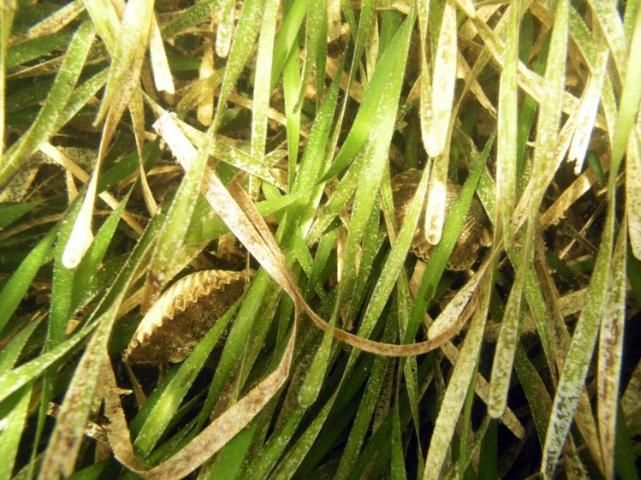
Credit: Savanna Barry, UF/IFAS
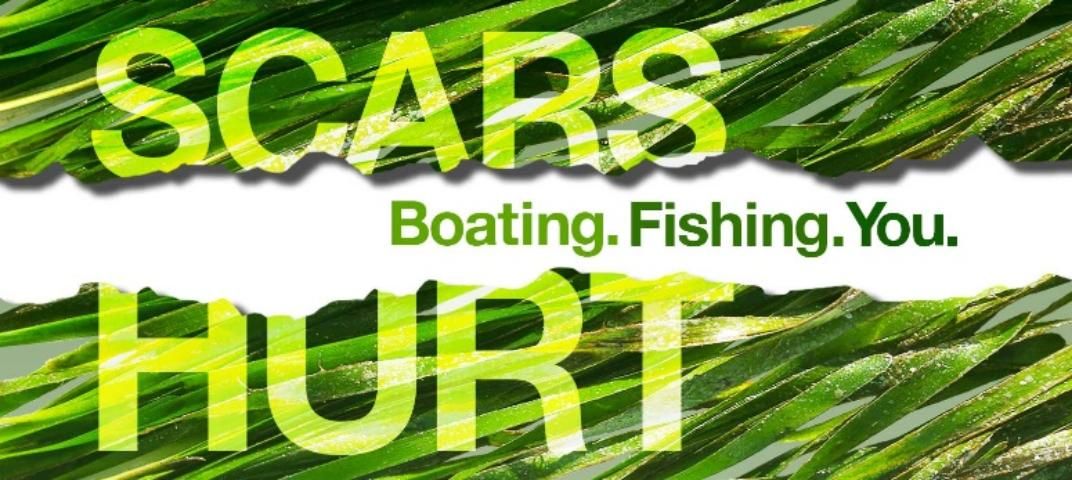
Credit: Florida Sea Grant
What makes a healthy seagrass community?
Florida's tourism and fishing industries rely on the important benefits provided by seagrasses. Seagrasses reduce shoreline erosion, oxygenate the water, capture carbon, trap sediments, and improve water clarity. Seagrasses also form extensive structural habitat that supports a diverse array of species, including economically valuable fishes and invertebrates. About 85 percent of the species targeted in commercial and recreational fisheries in Florida depend on seagrasses for at least part of their life cycle (Seaman 1985).
Seagrass Meadows Are Threatened
The Florida Fish and Wildlife Conservation Commission (FWC) names seagrasses as one of the most threatened marine habitats in Florida (FWC 2012). According to FWC, the highest-ranked stressors to seagrasses in Florida are:
- reduced water quality
- habitat destruction and physical damage through propel- ler scarring and vessel groundings
- sedimentation
Seagrasses also face temperature and salinity stress, especially in areas where freshwater inputs to the coast have been extensively altered.
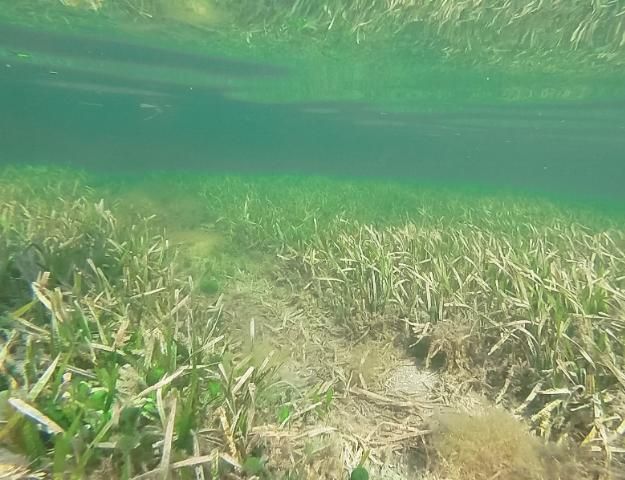
Credit: Savanna Barry, UF/IFAS
How does careless boating harm seagrasses?
Careless boating practices can damage seagrasses, and this is a growing problem in Florida. Propellers and anchors dragging the bottom create scarring, and vessels running aground and attempting to power off can form deep holes.
Natural recovery from physical damage can exceed ten years, especially when the root systems of slower-growing species such as turtle grass (Thalassia testudinum) are damaged or when currents and wave action cause erosion and expansion of scars (Kenworthy et al. 2002).
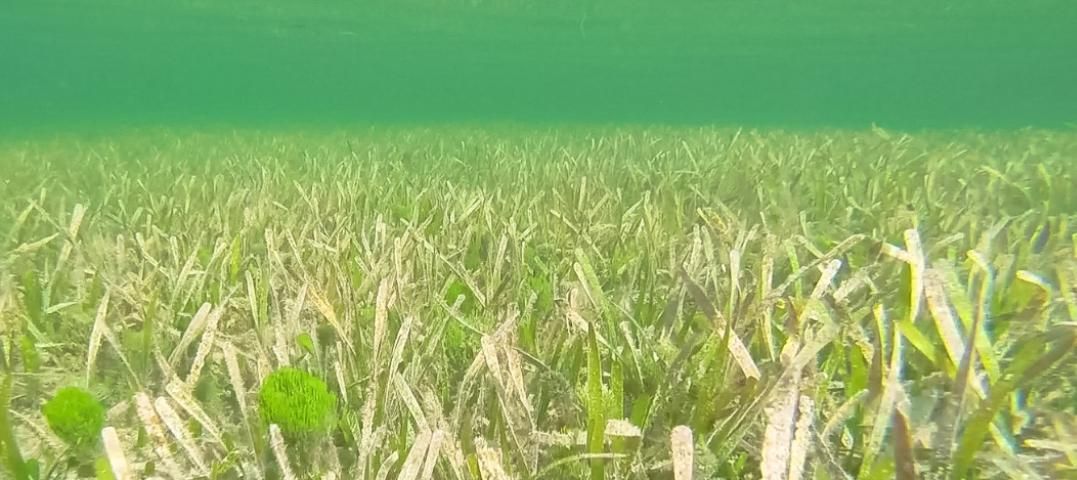
Credit: Savanna Barry, UF/IFAS
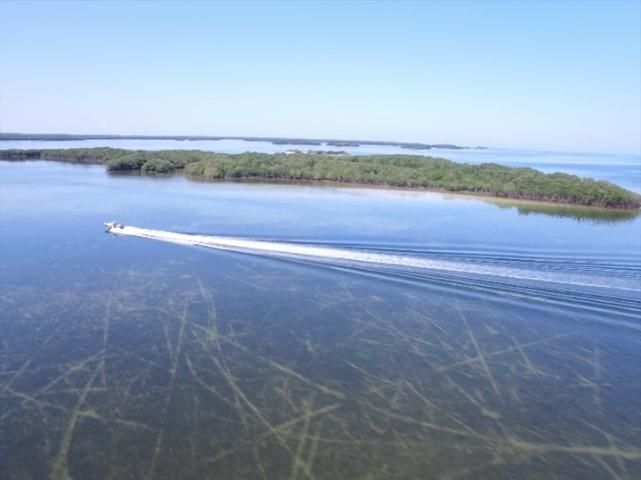
Credit: Jeff Hall, FLTV productions
How can boaters help?
The good news is that physical damage to seagrasses is 100% preventable with help from boaters like you. By following responsible boating practices like the ones below, you can help ensure that seagrasses in Florida continue to thrive. (http://beseagrasssafe.com).
- Know the operating depth of your vessel, and check tides and weather before going out. Plany our navigation around the tides—some areas may only be safely naviga-ble during higher tides.
- Whenever possible, operate your vessel in marked channels, and do not take short cuts over seagrass meadows.
- To identify shallow areas where seagrasses may be close to the surface, wear polarized sunglasses, and pay attention for other signs of shallow water such as standing birds or exposed crab traps.
- Anchor in sand patches whenever possible to avoid uprooting seagrass with your anchor. You may also opt for more seagrass-friendly manual or hydraulic shallow- water anchoring poles.
- Take a boating safety course (https://myfwc.com/boating/safety-education/)
Here's How You Can be a Seagrass-Safe Boater
- Avoid boating over seagrasses whenever possible.
- Trim (tilt) up your motor if you are boating over seagrass. Check behind you periodically, and if you observe your motor churning up mud or pieces of grass, trim up more and slow down. Churned-up grass or mud is a warning sign that your propeller is very close to contacting the bottom.
- Push or pole to deeper water with your motor off and lifted up if you run aground or are in a very shallow meadow. Do not attempt to use your motor to power off a seagrass area if you run aground. Powering off will cause a deep hole to form in the seagrass, and you run the risk of damaging your motor. Another option is to wait for high tide to float off the area.
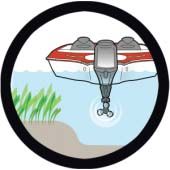


Remember the Rhymes to Avoid Damaging Sensitive Bottom Habitats
Brown, brown, run aground: Avoid brown areas. Brown indicates reefs or seagrass beds are close to the surface.
White, white, you just might: Use caution. Sandbars and rubble areas may be much shallower than they appear.
Green, green, nice and clean: Green waters are generally safe for shallow-draft boats; larger, deeper-draft vessels should exercise caution.
Blue, blue, cruise on through: Clear sailing in deep water areas.
What to do if you run aground:
STOP—Do not try to power off the seagrass. Turn OFF your motor.
Trim (tilt) your motor up.
Push or pole your boat out the way you came in, or drift free.
The state of Florida has over 8,400 miles of detailed shoreline (NOAA, 1975). Each day, thousands of boaters use our waterways for transportation, commercial or recreational fishing, swimming, diving, or cruising. Responsible boating will make a difference!
References
Florida Highway Safety and Motor Vehicles. 2019. https://www.flhsmv.gov/pdf/vessels/vesselstats2019.pdf. Accessed on February 16, 2021.
Seaman, W. 1985. Florida aquatic habitat and fishery resources. Florida Chapter of the American Fisheries Society. Eustis, Florida, USA.
Florida Fish and Wildlife Conservation Commission. 2012. Florida's Wildlife Legacy Initiative: Florida's State Wildlife Action Plan. Tallahassee, Florida, USA.
Kenworthy, W.J., M.S. Fonseca, P.E. Whitfield, K.K. Hammerstrom. 2002. "Analysis of seagrass recovery in experimental excavations and propeller-scar disturbances in the Florida Keys National Marine Sanctuary." Journal of Coastal Research 37: 75–85.
National Oceanic and Atmospheric Administration. 1975. The coastline of the United States. United States Department of Commerce. NOAA/PA 71046. Washington, D.C., USA.